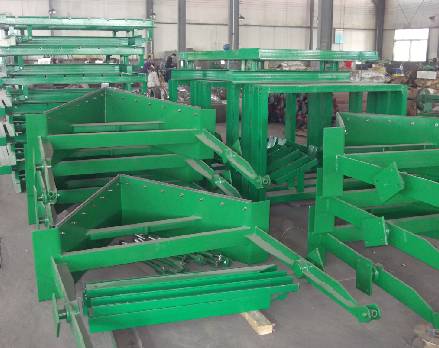 Afrikaans
Afrikaans  Albanian
Albanian  Amharic
Amharic  Arabic
Arabic  Armenian
Armenian  Azerbaijani
Azerbaijani  Basque
Basque  Belarusian
Belarusian  Bengali
Bengali  Bosnian
Bosnian  Bulgarian
Bulgarian  Catalan
Catalan  Cebuano
Cebuano  Corsican
Corsican  Croatian
Croatian  Czech
Czech  Danish
Danish  Dutch
Dutch  English
English  Esperanto
Esperanto  Estonian
Estonian  Finnish
Finnish  French
French  Frisian
Frisian  Galician
Galician  Georgian
Georgian  German
German  Greek
Greek  Gujarati
Gujarati  Haitian Creole
Haitian Creole  hausa
hausa  hawaiian
hawaiian  Hebrew
Hebrew  Hindi
Hindi  Miao
Miao  Hungarian
Hungarian  Icelandic
Icelandic  igbo
igbo  Indonesian
Indonesian  irish
irish  Italian
Italian  Japanese
Japanese  Javanese
Javanese  Kannada
Kannada  kazakh
kazakh  Khmer
Khmer  Rwandese
Rwandese  Korean
Korean  Kurdish
Kurdish  Kyrgyz
Kyrgyz  Lao
Lao  Latin
Latin  Latvian
Latvian  Lithuanian
Lithuanian  Luxembourgish
Luxembourgish  Macedonian
Macedonian  Malgashi
Malgashi  Malay
Malay  Malayalam
Malayalam  Maltese
Maltese  Maori
Maori  Marathi
Marathi  Mongolian
Mongolian  Myanmar
Myanmar  Nepali
Nepali  Norwegian
Norwegian  Norwegian
Norwegian  Occitan
Occitan  Pashto
Pashto  Persian
Persian  Polish
Polish  Portuguese
Portuguese  Punjabi
Punjabi  Romanian
Romanian  Russian
Russian  Samoan
Samoan  Scottish Gaelic
Scottish Gaelic  Serbian
Serbian  Sesotho
Sesotho  Shona
Shona  Sindhi
Sindhi  Sinhala
Sinhala  Slovak
Slovak  Slovenian
Slovenian  Somali
Somali  Spanish
Spanish  Sundanese
Sundanese  Swahili
Swahili  Swedish
Swedish  Tagalog
Tagalog  Tajik
Tajik  Tamil
Tamil  Tatar
Tatar  Telugu
Telugu  Thai
Thai  Turkish
Turkish  Turkmen
Turkmen  Ukrainian
Ukrainian  Urdu
Urdu  Uighur
Uighur  Uzbek
Uzbek  Vietnamese
Vietnamese  Welsh
Welsh  Bantu
Bantu  Yiddish
Yiddish  Yoruba
Yoruba  Zulu
Zulu head pulley in conveyor
The Role of Head Pulley in Conveyor Systems
Conveyor systems are integral to various industries, streamlining the process of transporting materials and products. Among the key components of these systems is the head pulley, an element that plays a significant role in the operation and efficiency of conveyors. This article delves into the significance of head pulleys, their functions, types, and maintenance considerations, all of which are essential for the optimal performance of conveyor systems.
Understanding the Head Pulley
The head pulley is located at the discharge end of a conveyor belt system. It is a drum that serves multiple purposes, primarily to drive the belt and facilitate the discharge of materials. As the belt transverses over the head pulley, it gains traction and begins to move. This action is crucial for the conveyor's functionality, as it propels materials from one point to another while maintaining a consistent feed rate.
Functions of the Head Pulley
The primary functions of the head pulley include
1. Belt Drive The head pulley is usually connected to a motorized drive, allowing it to rotate and move the conveyor belt. The drive system can be electric or hydraulic, depending on the application and load requirements.
2. Material Discharge As materials are transported along the conveyor, the head pulley facilitates their discharge at the end of the belt. The angle and design of the head pulley can influence how effectively materials are released.
3. Belt Tensioning The head pulley plays a role in maintaining the appropriate tension of the conveyor belt. Proper tension is essential for preventing belt slippage and ensuring a smooth operation.
4. Load Distribution The design of the head pulley can impact how loads are distributed across the conveyor belt. A well-designed pulley helps in even distribution, reducing wear and tear on the belt and other components.
Types of Head Pulleys
There are several types of head pulleys used in conveyor systems, each designed for specific applications
. Common types includehead pulley in conveyor

- Drive Pulleys These are powered by a motor and are responsible for driving the conveyor belt. They often have rubber coatings to enhance friction and grip.
- Non-Drive Pulleys These pulleys do not have a motor attached and serve primarily as guide points for the conveyor belt. They aid in maintaining the path and tension of the belt.
- Tail Pulleys Although not technically head pulleys, tail pulleys work in conjunction with head pulleys to stabilize conveyor systems. They are located at the opposite end and help to return the belt.
Maintenance Considerations
Proper maintenance of head pulleys is crucial for ensuring the longevity and efficiency of conveyor systems. Some key maintenance practices include
- Regular Inspections Frequent checks can help identify wear and tear on the pulley surface, bearings, and drive components. Early detection of issues can prevent costly downtimes.
- Lubrication Bearings that facilitate pulley rotation need to be adequately lubricated to avoid friction and overheating, which can lead to premature failure.
- Belt Tension Checks Monitoring the tension of the conveyor belt is vital. Too much tension can cause excessive wear, while too little can lead to slippage.
- Cleaning Keeping the head pulley clean from material buildup is essential. Accumulated debris can hinder functionality and lead to belt misalignment.
Conclusion
The head pulley is a fundamental component of any conveyor system, serving essential functions that directly affect system performance. Understanding its role, types, and maintenance requirements can help in maximizing the effectiveness and longevity of conveyor operations. As industries continue to innovate and expand, the importance of efficient and reliable conveyor systems—and their components like head pulleys—will only increase, making meticulous attention to these elements more crucial than ever.
-
Revolutionizing Conveyor Reliability with Advanced Rubber Lagging PulleysNewsJul.22,2025
-
Powering Precision and Durability with Expert Manufacturers of Conveyor ComponentsNewsJul.22,2025
-
Optimizing Conveyor Systems with Advanced Conveyor AccessoriesNewsJul.22,2025
-
Maximize Conveyor Efficiency with Quality Conveyor Idler PulleysNewsJul.22,2025
-
Future-Proof Your Conveyor System with High-Performance Polyurethane RollerNewsJul.22,2025
-
Driving Efficiency Forward with Quality Idlers and RollersNewsJul.22,2025





























